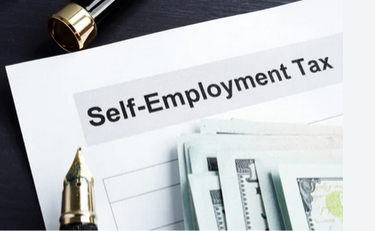
What are self-employment taxes?
Self-employment taxes are simply the amounts you pay towards Medicare and Social Security. If you previously worked for an employer, you never had to think about them since they were deducted from your paycheck before you ever got your hands on the money.
Every employee pays 6.2% of their pay towards Social Security and 1.45% of their pay towards Medicare. Those amounts are then matched by their employer – so in total, you pay just over 15% of your total pay towards these entitlement programs.
However, if you work for yourself, you’re both the employee AND the employer. Which means you’re on the hook for the entire amount.
How do I calculate these taxes?
The total amount of self-employment tax is calculated based on your net business income (ie, your revenue less expenses). If you have other income on your tax return, such as a rental property or investment income, those amounts would not be impacted by this tax.
To calculate them, you first start with 92.35% of your net income. (That amount isn’t random – it’s basically allowing you to deduct the employer portion of the taxes: 100% – 6.2% – 1.45% = 92.35%). This amount is then used to calculate the tax: multiply it by 15.3%* to get your total .
* Note: you only have to contribute to Social Security up to the ‘maximum contribution limit’, but all of your earnings are subject to Medicare taxes. If you made more than the limit ($147,000 in 2022), multiply your income by 2.9% (the Medicare portion) and add the maximum Social Security contribution ($18,228 in 2022) to find your total self-employment tax amount.
Is there a way to lower my self-employment taxes?
There isn’t a way to directly lower these taxes, as the amount owed is simply a percentage of your business income. But since the amount is based on your net business income, lowering that amount will consequently lower the self-employment taxes as well. So finding other business deductions will have the double benefit of lowering both your income AND self-employment taxes.
There is one exception: if your business is currently a single-member LLC being taxed as a sole proprietor you may elect to be taxed as an S-Corp instead. Only the ‘salary’ portion of your income is subject to self-employment taxes.
How do I pay self-employment taxes?
When you complete your tax filing at the end of the year, you’ll include Schedule SE in your return. This form shows what you owe and will flow into other parts of your return. These taxes will also be reflected in your quarterly estimated payments, so paying those throughout the year will help reduce interest and penalties later.
If you have any questions about anything in this article, please send us a message.